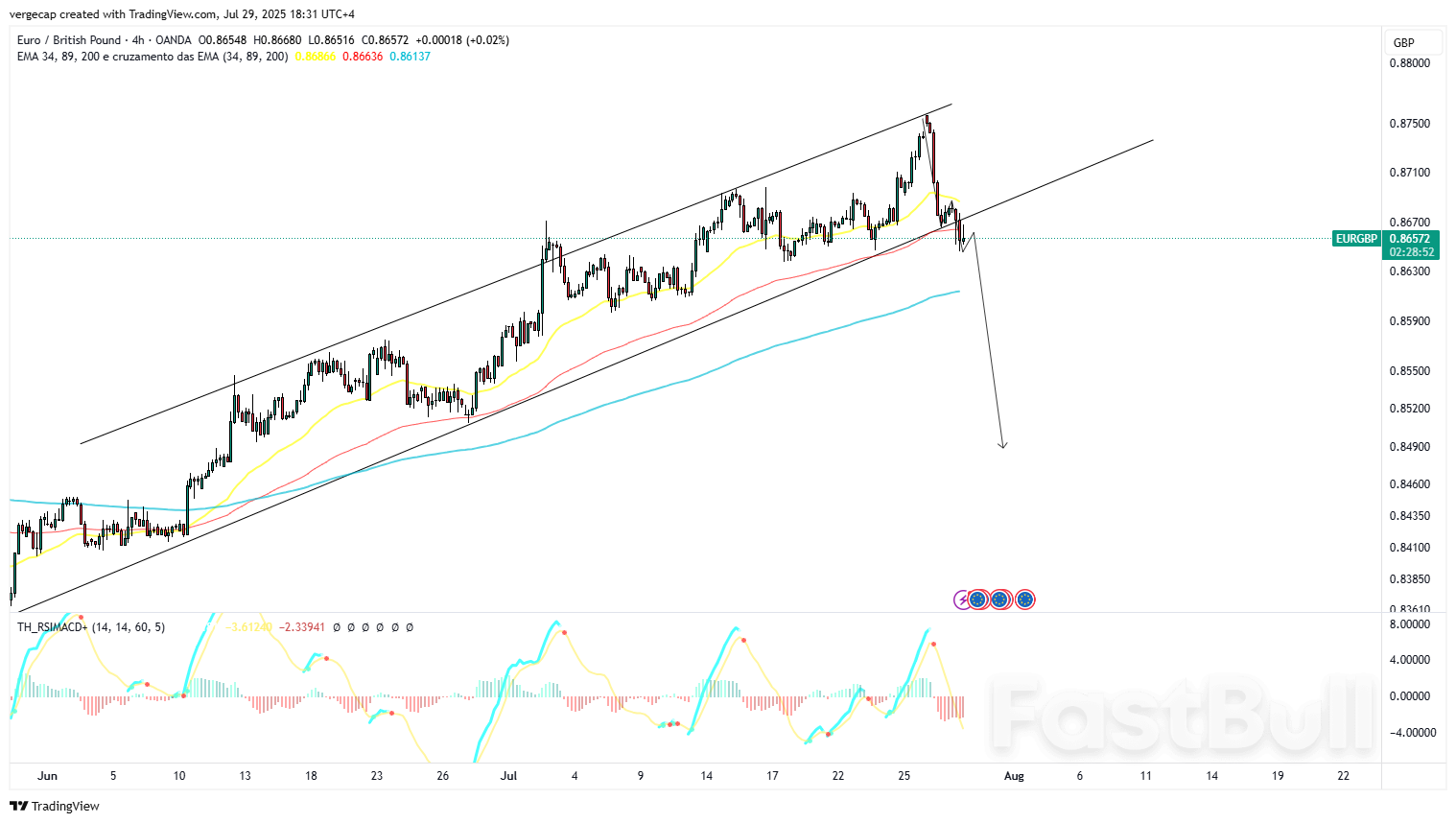The Euro’s recent rally came to an abrupt halt this week as EUR/GBP extends losses for a second consecutive session, driven by growing political and economic tensions stemming from the controversial US-EU trade agreement signed over the weekend. As of Tuesday’s U.S. trading session, the EUR/GBP cross is down nearly 0.20%, trading around 0.8656, marking a deeper retracement from Monday’s intra-day peak of 0.8753 — a high not seen since November 2023. The sudden reversal suggests markets are reassessing not just the short-term risks, but also the broader trajectory of the Eurozone’s economic positioning.
The spark behind this sharp revaluation lies in the transatlantic trade accord that was unveiled on Sunday by U.S. President Donald Trump and European Commission President Ursula von der Leyen. While initially framed as a win-win breakthrough in transatlantic trade, the agreement has quickly come under fire across major EU economies. Critics in Germany, France, and Italy have blasted the deal as “deeply unbalanced” and “overwhelmingly favorable to the United States,” raising fresh doubts about the Eurozone’s global trade competitiveness at a time when domestic growth remains fragile.
The most contentious point of the agreement is the blanket imposition of a 15% tariff on a wide array of EU exports to the U.S., a massive leap from the current average of just 1.2%. Sectors hardest hit include automobiles, industrial machinery, pharmaceuticals, and high-end consumer goods — all vital pillars of the EU’s export-driven economy. Even though a "zero-for-zero" clause spares select categories such as aircraft parts, semiconductors, and some agricultural products, these account for merely 30% of total EU exports, leaving the bulk of the bloc’s output exposed to hefty levies.
In stark contrast, U.S. exports to the EU will remain tariff-free under the new framework, effectively giving American manufacturers a significant price advantage in European markets. Furthermore, the deal leaves intact punitive tariffs of up to 50% on EU steel and aluminum entering the U.S., deepening concerns among European industrial leaders that the agreement lacks true reciprocity.
The imbalance has not gone unnoticed by investors. The Euro has steadily lost ground as traders increasingly question the EU’s negotiating leverage and its ability to shield core industries from external shocks. The timing could not be worse: high energy costs, weakening consumer confidence, and the lingering effects of tight monetary policy are already threatening to cap growth across the continent.
Adding a further layer of complexity, President Trump met with UK Prime Minister Keir Starmer at his Turnberry estate in Scotland on Monday to discuss advancing U.S.-UK trade talks. According to sources cited by Reuters, the pair discussed lowering tariffs on pharmaceuticals and Scotch whisky, with Trump expressing a willingness to ease barriers on UK goods “in selected categories.” Starmer reportedly pushed for broader concessions, especially for the steel industry. The meeting, while short on finalized outcomes, adds to the narrative that the U.S. is building deeper bilateral ties with the UK — a move that may strategically sideline the EU in future trade realignments.
Looking ahead, the market will be closely watching Wednesday’s Eurozone economic data dump, which includes preliminary Q2 GDP estimates and key sentiment indicators for July. A weak reading would further sap confidence in the Eurozone’s growth outlook, reinforcing the bearish tone that has overtaken EUR/GBP. Conversely, stronger-than-expected figures may provide temporary relief, though any bounce in the Euro is likely to be constrained by the broader backdrop of trade policy uncertainty and investor skepticism.
Technical Analysis
From a technical standpoint, EUR/GBP has now given up over 0.76% from its weekly high, confirming what many analysts see as a corrective phase. Price action on the 4-hour chart suggests a developing market structure shift, with unmitigated liquidity building up around the 0.86100 zone — a level that could serve as a magnet for institutional order flow in the coming days. Traders eye this level as a likely downside target, with initial support seen at 0.85500 and deeper correction potential should sentiment deteriorate further.
The recent rejection of the 0.8750 resistance zone — a level that marked a two-year high — now looks increasingly like a false breakout. Momentum indicators are flashing bearish divergences, while volume profiles suggest heavy selling interest has emerged at the top, amplifying downside risks.
TRADE RECOMMENDATION
SELL EURGB
ENTRY PRICE: 0.8660
STOP LOSS: 0.8750
TAKE PROFIT: 0.8550













